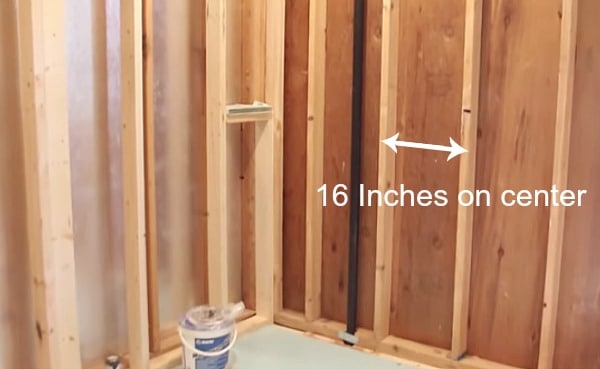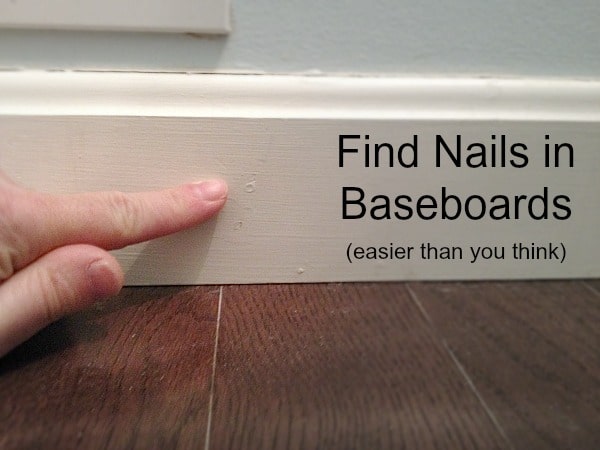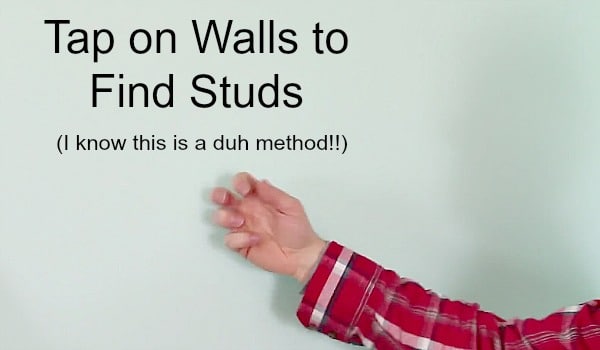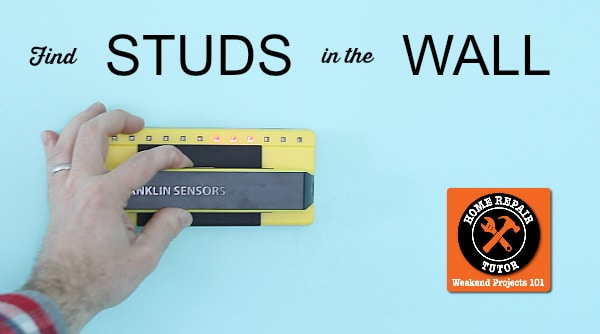When I find cool tools I instantly share them.
So last weekend I was doing some work in our bathroom.
Installing a pedestal sink to be precise.
I thought I found the stud locations but apparently my stud finder was asleep at the wheel.
DARN IT!!!
Had I gotten the tool I’m going to show you today I probably wouldn’t have torn a hole in my wall.
Don’t miss out on the surprise at the end of this tutorial (or sneak to the bottom, haha).
It’s a good idea to understand some basics about stud walls.
Most of the time, studs are spaced about 16 t0 24 inches on center.

This means that from the center of one stud to the next the distance is 16 inches or 24 inches.
Modern studs (homes build after 1965) are not 2 inches wide, but instead 1.5 inches.
As such the space between studs is about 14.5 inches.
If you have an older home (built before 1950) then your studs could actually be a legitimate 2 inches.
Not everything that is new isn’t better, lol.
Those of us getting older do have hope!!
There are several savvy ways to spot studs without any tool.
Take a look at baseboard trim or crown molding.

Baseboards should be attached to studs and if the spacing of nails is about 16 inches this might be the case.
Spot the nails with your eye then knock on the wall directly above the nail location.
If the you hear a higher pitch sound above the nails then you’ve likely found a stud.
Just be careful if there are pipes in that same wall.
Not a good idea to pound a nail in a waste pipe!!!
So always be sure it’s a stud and not a pipe.
The old tried and true method of knocking on the wall with your knuckles helps find the general location of studs.

As I mentioned above you can tap on the wall with your knuckle.
Move left to right tapping on the wall and when you hear a different pitch that’s likely the stud.
Once you find one location you can measure over 16 inches to find the next stud.
This is a simple way to find studs.
Yet sometimes it’s not full proof.
A third method is to use a strong magnet to locate the nail or screws holding the drywall to the studs.
You can knock on the wall to find the general stud location then confirm using the magnet.

Hard drive magnets are perfect for this (yes, I know the magnet in the picture isn’t a hard drive magnet, haha).
Old computers do come in handy 😀
Once you find the nail or screw just measure over 16 or 24 inches to find each successive stud.
You can also use a level to draw a perfectly plumb line on the stud if you need the entire height of the stud.
One issue with this method is the fact that not all nails or screws will be perfectly in the center of the stud.
Think about it, whoever installed the drywall is only human, not the Terminator with a nail gun.
Although it would be funny to see Arnold Schwarzenegger hanging drywall.
A third thing to consider when using this magnet method is the fact that some studs have metal protector plates.
Plumbers and contractors use small metal plates to prevent screws from piercing pipes that run through studs.
Keep all of this in mind when using the magnet method.
Stud finders: some people love them and some people think they’re a waste of money.
My last stud finder let me down on my last project.
So I went on a quest to find the best reviewed stud finder tool and try it.
Research shows the Franklin Sensor stud finder is pretty AWESOME.
I fell in love with this little tool and you might too…
What’s Next
Having the right tool makes all the difference. This Franklin Sensor is awesome, I highly recommend it.
If you’re doing a bathroom remodel and need help, join one of our online courses – they’ll make your bathroom renovation much easier!
Let me know if you have any questions and I’ll do my best to help.
Thanks as always for reading, watching, and being part of our awesome community.
Cheers,
Jeff



